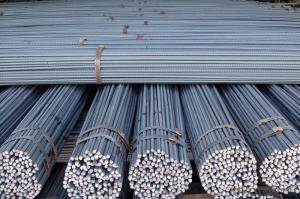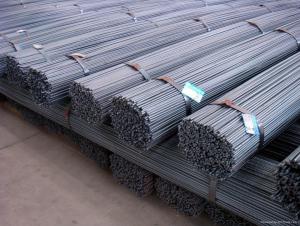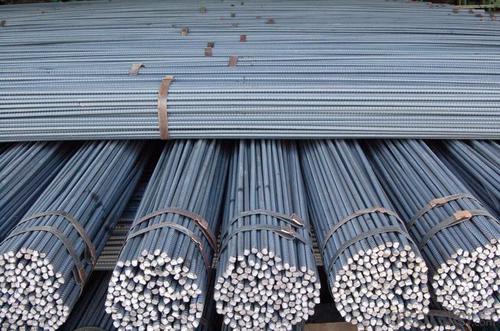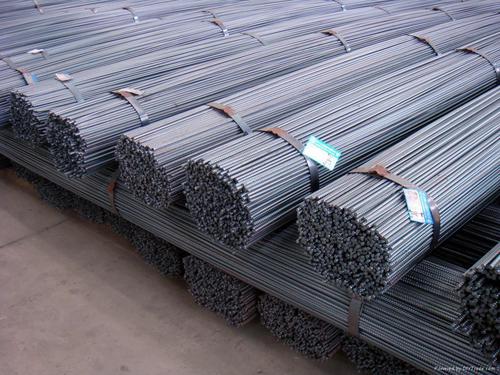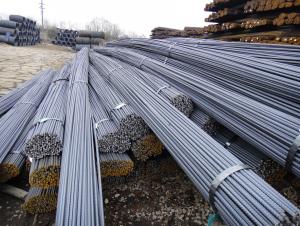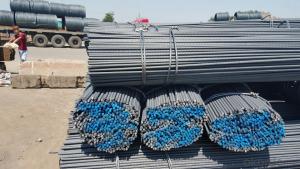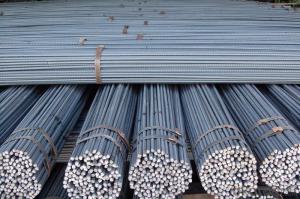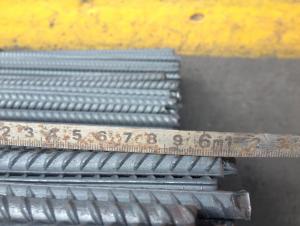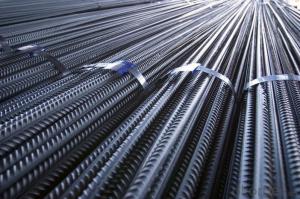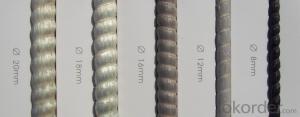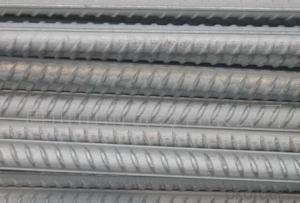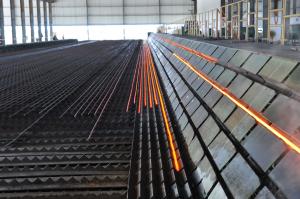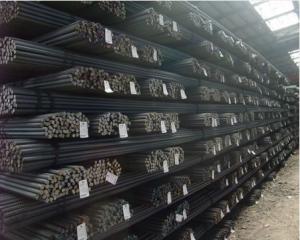Hot Rolled Rebars with High Quality and Best Price
- Loading Port:
- Tianjin
- Payment Terms:
- TT OR LC
- Min Order Qty:
- 25 m.t.
- Supply Capability:
- 10000 m.t./month
OKorder Service Pledge
OKorder Financial Service
You Might Also Like
OKorder is offering high quality Hot Rolled Rebars at great prices with worldwide shipping. Our supplier is a world-class manufacturer of steel, with our products utilized the world over. OKorder annually supplies products to European, North American and Asian markets. We provide quotations within 24 hours of receiving an inquiry and guarantee competitive prices.
Product Applications:
Deformed bar is widely used in buildings, bridges, roads and other engineering construction. Big to highways, railways, bridges, culverts, tunnels, public facilities such as flood control, dam, small to housing construction, beam, column, wall and the foundation of the plate, deformed bar is an integral structure material. With the development of world economy and the vigorous development of infrastructure construction, real estate, the demand for deformed bar will be larger and larger..
Label: to be specified by customer, generally, each bundle has 1-2 labels
Product Advantages:
OKorder's Hot Rolled Rebars are durable, strong, and resist corrosion.
Main Product Features:
· Premium quality
· Prompt delivery & seaworthy packing (30 days after receiving deposit)
· Corrosion resistance
· Can be recycled and reused
· Mill test certification
· Professional Service
· Competitive pricing
Product Specifications:
Manufacture: Hot rolled
Grade: HRB400 – HRB500
Certificates: ISO, SGS, BV, CIQ
Length: 6m – 12m, as per customer request
Packaging: Export packing, nude packing, bundled
Grade | Technical data of the original chemical composition (%) | ||||||
C | Mn | Si | S | P | V | ||
HRB400 | ≤0.25 | ≤1.60 | ≤0.80 | ≤0.045 | ≤0.045 | 0.04-0.12 | |
Physical capability | |||||||
Yield Strength (N/cm²) | Tensile Strength (N/cm²) | Elongation (%) | |||||
≥400 | ≥570 | ≥14 | |||||
Theoretical weight and section area of each diameter as below for your information:
Diameter(mm) | Section area (mm²) | Mass(kg/m) | Weight of 12m bar(kg) |
6 | 28.27 | 0.222 | 2.664 |
8 | 50.27 | 0.395 | 4.74 |
10 | 78.54 | 0.617 | 7.404 |
12 | 113.1 | 0.888 | 10.656 |
14 | 153.9 | 1.21 | 14.52 |
16 | 201.1 | 1.58 | 18.96 |
18 | 254.5 | 2.00 | 24 |
20 | 314.2 | 2.47 | 29.64 |
22 | 380.1 | 2.98 | 35.76 |
25 | 490.9 | 3.85 | 46.2 |
28 | 615.8 | 4.83 | 57.96 |
32 | 804.2 | 6.31 | 75.72 |
36 | 1018 | 7.99 | 98.88 |
40 | 1257 | 9.87 | 118.44 |
50 | 1964 | 15.42 | 185.04 |
FAQ:
Q1: Why buy Materials & Equipment from OKorder.com?
A1: All products offered byOKorder.com are carefully selected from China's most reliable manufacturing enterprises. Through its ISO certifications, OKorder.com adheres to the highest standards and a commitment to supply chain safety and customer satisfaction.
Q2: How do we guarantee the quality of our products?
A2: We have established an advanced quality management system which conducts strict quality tests at every step, from raw materials to the final product. At the same time, we provide extensive follow-up service assurances as required.
Q3: How soon can we receive the product after purchase?
A3: Within three days of placing an order, we will begin production. The specific shipping date is dependent upon international and government factors, but is typically 7 to 10 workdays.
Images:
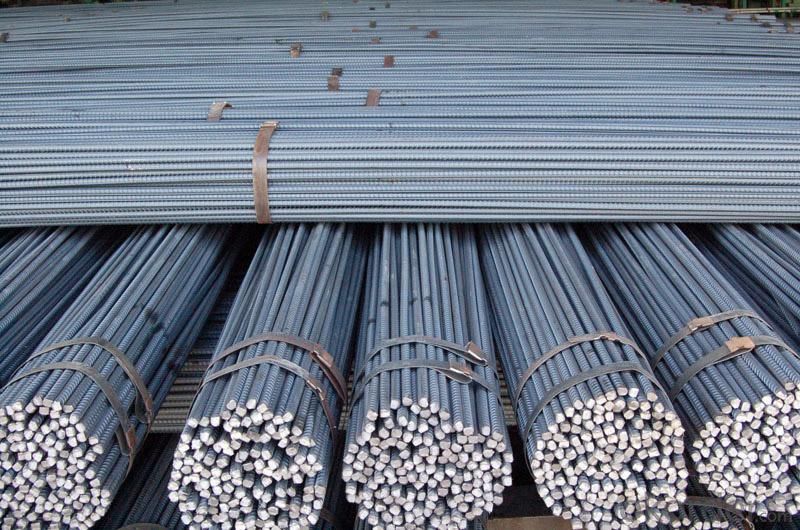
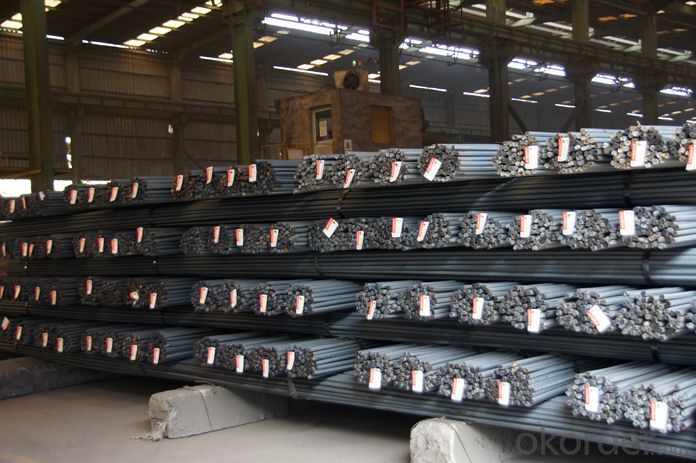
- Q: Are steel rebars suitable for use in structures with high impact resistance requirements?
- Steel rebars are commonly used in construction due to their high tensile strength and ability to withstand heavy loads. However, when it comes to structures with high impact resistance requirements, steel rebars may not be the most suitable choice. While steel rebars are strong, they have limited impact resistance compared to other materials such as fiberglass or carbon fiber. In structures that are prone to high impact loads, such as bridges, earthquake-resistant buildings, or structures subject to heavy machinery or vehicle collisions, alternative materials may be more appropriate. Fiberglass rebars, for example, offer enhanced impact resistance due to their flexibility and ability to absorb energy without fracturing. They also have a higher strength-to-weight ratio compared to steel rebars. Carbon fiber rebars, on the other hand, possess exceptional impact resistance and are often used in aerospace and military applications. In conclusion, while steel rebars are a reliable choice for many structural applications, structures with high impact resistance requirements may benefit from the use of alternative materials such as fiberglass or carbon fiber rebars. It is important to carefully consider the specific needs and demands of the structure to ensure its durability and safety.
- Q: Are steel rebars easy to work with?
- Steel rebars can be both easy and challenging to work with, depending on the specific task and the individual's experience and skill level. In general, steel rebars are known for their strength and durability, making them a popular choice in construction projects. They are relatively easy to handle and manipulate due to their uniform shape and standardized sizes. However, working with steel rebars also requires certain precautions and techniques. Cutting and bending rebars can be physically demanding and may require specialized tools such as rebar cutters and benders. Additionally, the weight of rebars can be a challenge, especially when dealing with longer and thicker pieces. Furthermore, proper safety measures need to be followed when working with steel rebars. Wearing protective gear, such as gloves and goggles, is crucial to prevent injuries. Attention must also be paid to avoid any potential hazards, such as sharp edges and protruding rebars. Overall, while steel rebars can be relatively easy to work with for experienced professionals, they may present challenges for individuals with limited knowledge or tools. It is recommended to seek proper training and guidance when working with steel rebars to ensure safety and achieve precise results.
- Q: What are the safety precautions when working with steel rebars?
- When working with steel rebars, some important safety precautions to follow include wearing proper personal protective equipment such as gloves, safety glasses, and steel-toed boots to protect against potential injuries. It is crucial to handle rebars with care to avoid cuts or punctures, as the sharp edges can be hazardous. Additionally, workers should always be cautious of their surroundings and ensure a clear and organized work area to prevent tripping or falling accidents. Lastly, it is important to follow proper lifting techniques and use appropriate equipment to avoid strain or back injuries.
- Q: What are the factors that determine the strength of steel rebars?
- The strength of steel rebars is determined by several factors. Firstly, the composition of the steel used in the manufacture of rebars plays a crucial role. The presence of certain elements, such as carbon, manganese, and silicon, can significantly affect the strength of the steel. These elements enhance the steel's ability to resist tension and provide structural stability, ultimately determining the strength of the rebars. Secondly, the manufacturing process of the rebars has an impact on their strength. The steel is typically heated and then rapidly cooled, a process known as quenching and tempering, which helps in achieving the desired strength. The precise temperature and duration of this process can influence the rebars' strength, as it affects the grain structure and chemical properties of the steel. Thirdly, the size and shape of the rebars also play a role in determining their strength. The diameter and length of the rebar affect its load-bearing capacity. Thicker and longer rebars generally have higher strength as they can withstand greater stress and distribute it more effectively. Furthermore, the presence of any impurities or defects in the steel can weaken the rebars. These defects can include cracks, voids, or inclusions, which can compromise the structural integrity of the rebar and reduce its strength. Lastly, the environment and conditions in which the rebars will be used should also be considered. Factors such as temperature, humidity, and exposure to corrosive substances can impact the rebars' strength over time. Proper precautions, such as using corrosion-resistant coatings or stainless steel rebars, should be taken to ensure the longevity and strength of the rebars in such environments. In conclusion, the strength of steel rebars is determined by the composition of the steel, the manufacturing process, the size and shape of the rebars, the presence of defects, and the environmental conditions in which they will be used. Considering these factors is crucial for ensuring the durability and reliability of steel rebars in construction applications.
- Q: How are steel rebars connected or joined together?
- Steel rebars are commonly connected or joined together using different techniques such as overlapping, welding, mechanical splicing, or using couplers. These methods ensure a strong and secure connection between the rebars, enhancing the structural integrity of reinforced concrete elements.
- Q: How are steel rebars spliced or connected in construction joints?
- Steel rebars are typically spliced or connected in construction joints using several methods, including lap splicing, mechanical splicing, and welded splicing. Lap splicing involves overlapping the rebars and tying them together with wire or steel bars, ensuring proper alignment and contact between the rebars. Mechanical splicing utilizes couplers or threaded sleeves to connect the rebars, providing a stronger and more efficient joint. Welded splicing involves welding the rebars together, ensuring a secure and durable connection. The choice of splicing method depends on factors such as the project requirements, structural design, and construction site conditions.
- Q: Can steel rebars be used in soundproof structures?
- Yes, steel rebars can be used in soundproof structures. Steel rebars provide structural strength and stability to buildings, but they do not significantly contribute to sound insulation. To ensure effective soundproofing, additional materials such as acoustic panels, insulation, or soundproofing membranes need to be incorporated into the building design.
- Q: Laiwu steel thread steel trademark color blue and red Qu Qu
- The current steel market shoddy (commonly known as hot rolled ribbed steel rebar) unqualified factors are mainly: 1, the actual size than the nominal size is small, the actual weight of dealers through purchase, the amount of metal delivery weight theory earn profits. 2, the intensity is low. 3, the chemical composition unqualified rate is high. The main reason is that the raw material of the small rolling mill is not qualified, and the steel billet is rolled by soil.
- Q: What is the role of steel rebars in roof slab construction?
- Steel rebars play a crucial role in roof slab construction by providing strength, durability, and reinforcement to the structure. They are used to reinforce the concrete and enhance its load-bearing capacity, allowing the roof slab to withstand external forces such as live loads, dead loads, and wind loads. The rebars are strategically placed within the roof slab to create a mesh-like structure, forming a strong bond with the concrete. This reinforcement prevents the concrete from cracking or breaking under heavy loads, ensuring the structural integrity of the roof slab. Additionally, steel rebars help to distribute the load evenly, minimizing the risk of localized stress concentration. By adding steel rebars to the roof slab, it becomes capable of resisting tensile forces, which concrete alone is unable to handle effectively. This is important as roofs are subjected to various forces such as wind uplift and expansion and contraction due to temperature changes. The rebars act as a backbone, absorbing and distributing these forces throughout the slab, preventing any potential structural failures. Moreover, steel rebars also provide resistance against deformations caused by shrinkage and thermal expansion of the concrete. These factors can lead to cracks and instability in the roof slab, but the presence of rebars helps to control and limit such deformations, maintaining the overall stability of the structure. In summary, the role of steel rebars in roof slab construction is to provide reinforcement, strength, and durability to the concrete. They enhance the load-bearing capacity, resist tensile forces, distribute loads evenly, and prevent cracking or breaking, ensuring the long-term structural integrity and stability of the roof slab.
- Q: What is the recommended method for tying steel rebars together?
- The recommended method for tying steel rebars together is typically using steel wire or rebar tying tools to secure the rebars in place. This ensures a strong and secure connection between the rebars, providing structural integrity to the reinforced concrete.
Send your message to us
Hot Rolled Rebars with High Quality and Best Price
- Loading Port:
- Tianjin
- Payment Terms:
- TT OR LC
- Min Order Qty:
- 25 m.t.
- Supply Capability:
- 10000 m.t./month
OKorder Service Pledge
OKorder Financial Service
Similar products
Hot products
Hot Searches
Related keywords
